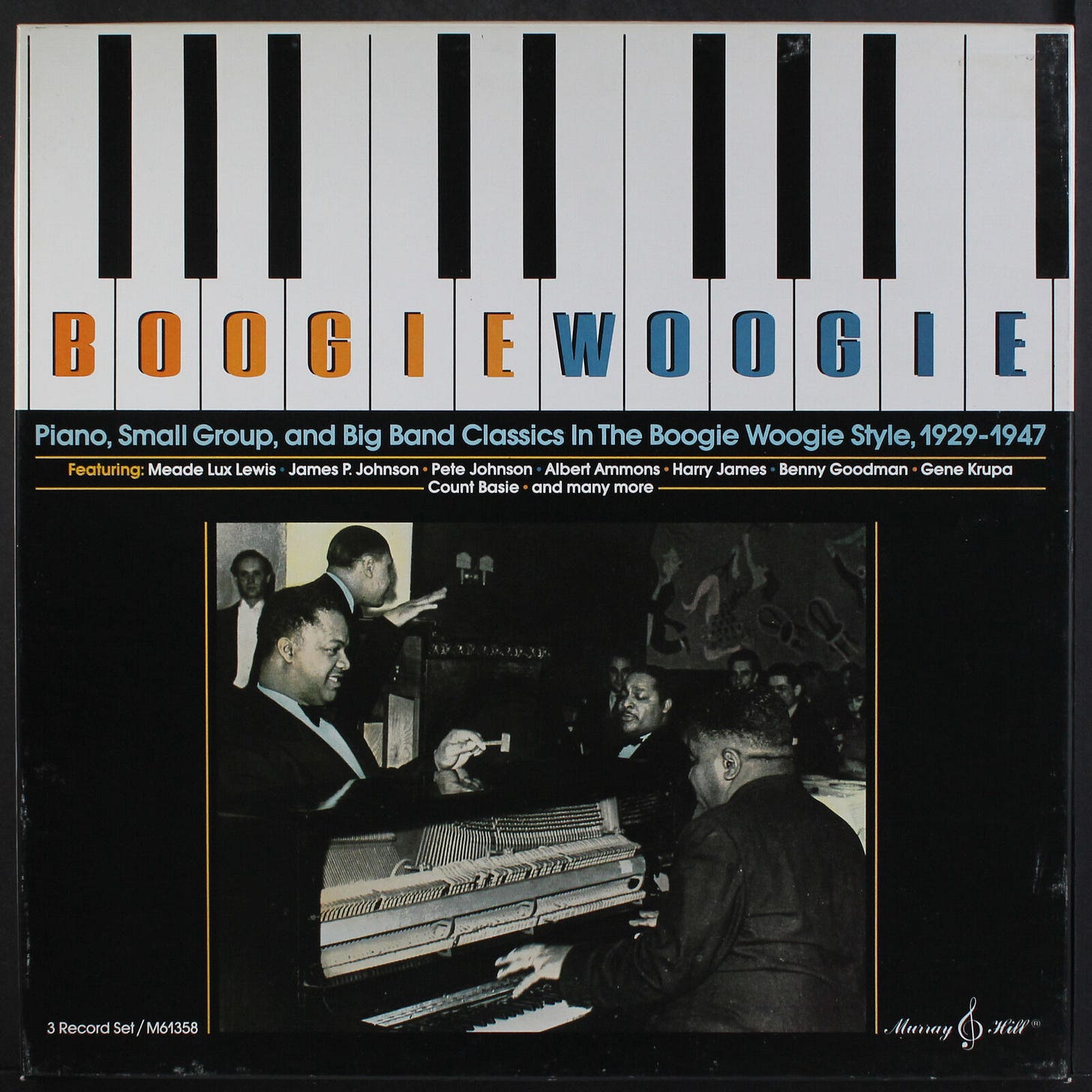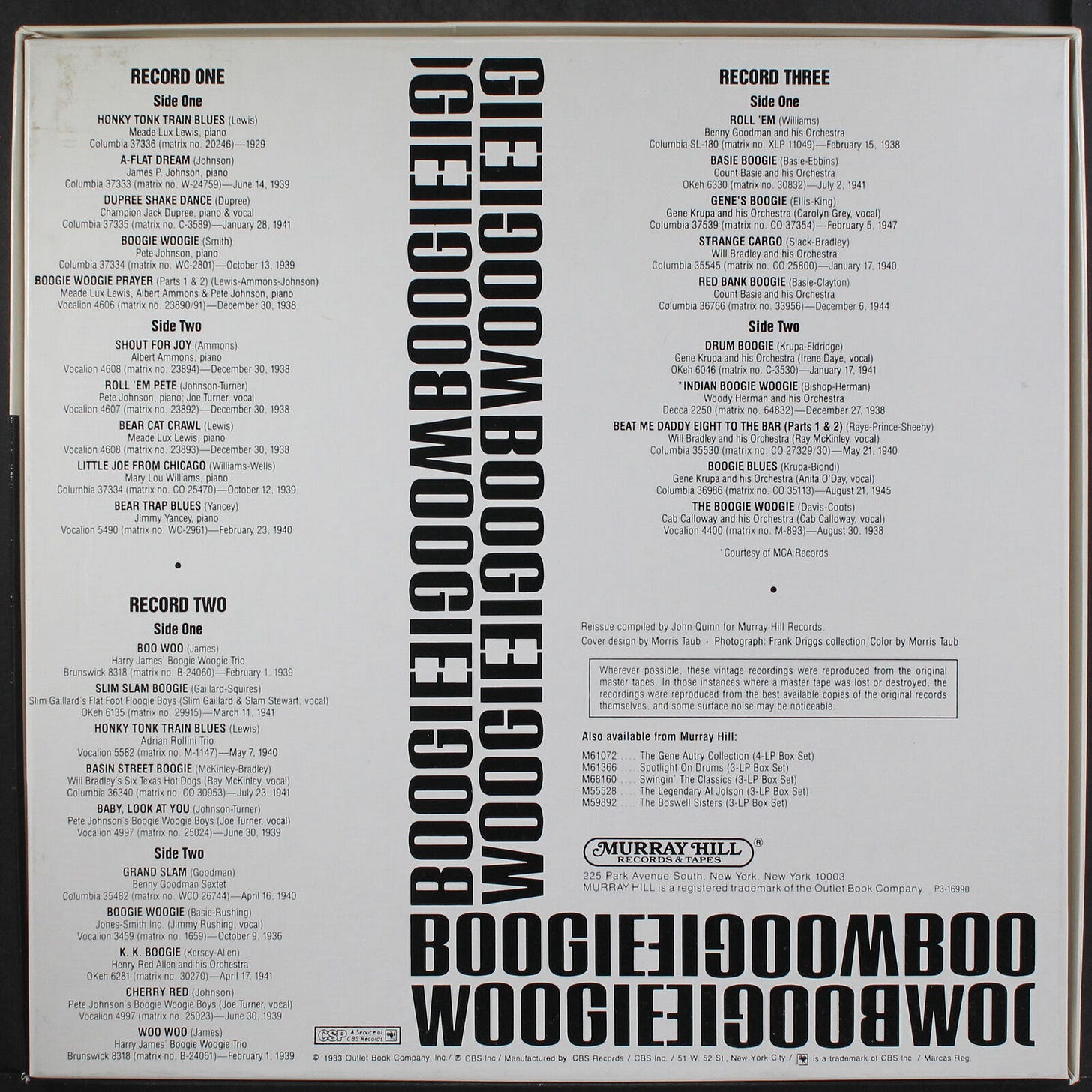In the New York Times, I’m one of a dozen offering "Five Minutes to Make You Love Mary Lou Williams."
“Little Joe From Chicago” is one of my occasional party pieces; at one point I performed it a lot, including for Lorraine Gordon’s memorial at the Village Vanguard.
The video above comes from the pandemic lockdown, when I played along with the 1939 recording. To make it a bit more mysterious, I sped up and de-tuned the original track slightly.
If anyone wants the pdf of the transcription, just reply to this email with that request.
All of the selections in the “5 Minutes” piece are great, but Mark Stryker pointed out, “Not one panelist chose one of her widely if quietly influential big band arrangements, arguably her most important work.”
On Twitter, Mark enlisted Darcy James Argue to help discuss the topic.
From Mark Stryker:
"Mary's Idea" (1938) Andy Kirk & His 12 Clouds of Joy. Swinging melody, call/response, interesting motivic development. Great pacing; new ideas keep flowing. Great contrast in texture and color, Dig the muted brass behind the clarinet solo.
"Walkin' and Swingin'" Andy Kirk & His 12 Clouds of Joy. (1936). Ingenious second chorus places trumpet on top of a sax section soli, with threading-the-changes arpeggios in the bridge (advanced for '36) and the riff Monk later used in “Rhythm-a-Ning.”
"Big Jim Blues." Andy Kirk & His 12 Clouds of Joy. (1939). Lead trumpeter Harry Lawson wrote the tune, but it's MLW's remarkable arrangement that makes it. Ellington-like pastel colors and subtle textures and lots of cross-section chamber orchestration.
"Trumpets No End." Duke Ellington Orchestra (1947). Williams' arranged this take on Berlin's "Blue Skies" for Duke, who adapted it as a feature for his trumpet section and renamed it "Trumpets No End."
"In The Land Of Oo-Bla-Dee." Dizzy Gillespie (1949). MLW wrote the harmonically hip music & words for this bebop novelty. Benny Goodman in his bop phase introduced it with an octet w/Buddy Greco singing, but Dizzy's big band w/Joe Carroll transcends.
MLW’s creative imagination and impeccable craftsmanship is used to beautifully expressive ends in her innovative big band writing.
— Mark Stryker
From Darcy James Argue:
Mary Lou Williams was one of the most in-demand writers of the big band era, and also one of the most inventive. Everything she wrote for Andy Kirk is great, of course, but an overlooked 1947 masterpiece for Benny Goodman is “Lonely Moments.” That 3-part fugue leading into the shout is astonishingly great.
Mark mentioned the 1938 “Mary’s Idea,” which is one of the very greatest charts of the swing era. Another stone classic, “A Mellow Bit of Rhythm,” was also adopted by Earl Hines and Les Brown, among others.
Finally, every jazz fan should know Mary’s savage roast of Louis Armstrong’s mobbed-up manager Joe Glaser, “Little Joe from Chicago.” Is this the first dis track of a named contemporary individual? (It can’t be, right? But I’m having trouble thinking of an earlier example.) In his entry, Ethan cites both versions of “Little Joe,” but the format only allows them to link to one. The solo piano rendition has incredible pianism, but the original has glorious orchestration *plus* the ruthless lyrical beat-down.
— Darcy James Argue
I’ve known “Little Joe From Chicago” almost as long as I’ve been listening to music.
Puzzle piece no.1: The first boogie woogie I heard was Chuck Miller’s inauthentic but engaging “House of Blue Lights” on a 45 owned by my best friend’s father. I suppose I was 8 or 9 years old, and it was not quite 30 years since “House of Blue Lights” was Miller’s big hit in 1955.
Puzzle piece no. 2: My aunt had a copy of Sharon Pease’s Boogie Woogie Piano Styles from 1940.
It’s a fine little volume, especially since it named names: Meade Lux Lewis, Albert Ammons, Pete Johnson, and Mary Lou Williams.
The next step was finding some recordings of these “leading exponents.” Well. First I needed a record player! I talked my mom into buying me a turntable. Then, in a low-budget mail-order catalog, I found what looked to be another important puzzle piece: The Murray Hill 3-LP set Boogie Woogie. Piano, Small Group, and Big Band Classics in the Boogie Woogie Style, 1929-1947.
Once again, I campaigned vigorously until my mother relented and placed the order.
Side two of second one was it. Five masterpieces in a row, and I could keep moving the needle back to the top of the side as often as I wanted.
Shout For Joy — Albert Ammons
Roll ‘Em Pete — Pete Johnson (with Joe Turner)
Bear Cat Crawl — Meade Lux Lewis
Little Joe From Chicago — Mary Lou Williams
Bear Trap Blues — Jimmy Yancey
If I was Foster Wallace or Proust, I could extrapolate my entire life from this budget Murray Hill set. In a more modest vein, I will simply note that A) the fussy discographical data — “Little Joe” is annotated Columbia 37334 (matrix no. CO 25470), October 12, 1939) —- surely activated the nerdy “collector” aesthetic shared by so many jazz fans, and B) I basically hated the fancy big band arrangements on record three, setting me up a lifetime of preferring things that are comparatively raw and to the point.
These days, of course, I enjoy all the big band arrangements just fine, although I will probably never fully approve of Mary Lou putting boogie bass in the saxophones for the first stanza of “Roll ‘Em” for Benny Goodman.
The band cut that I liked best then (and perhaps even now) is “Strange Cargo” by Will Bradley and his Orchestra, a mysterious medium slow stroll that I now realize prepared my ears for Duke Ellington.
The pianist on “Strange Cargo” is all-but-forgotten Freddie Slack, a white cat from Wisconsin who backed Ella Mae Morse on the first record of “House of Blue Lights” (as stated above, the later Chuck Miller version was my introduction to the style). Slack rates a positive mention by Hampton Hawes in Raise Up Off of Me.
Only recently while working on my large-scale Jazz Education post did I learn that lyricist for “House of Blue Lights” was Don Raye. Raye contributed words for a few other boogie novelty numbers, including “Beat Me Daddy, Eight to the Bar” on the Murray Hill set, but the big one was “Boogie Woogie Bugle Boy,” a huge hit for the Andrews Sisters. All of America danced to “Boogie Woogie Bugle Boy.” The song was feel-good propaganda, easing the shock of sending young men off to fight in World War II.
He was a famous trumpet man from out Chicago way
He had a boogie style that no one else could play
He was the top man at his craft
But then his number came up and he was gone with the draft
He's in the army now, a blowin' reveille
He's the boogie woogie bugle boy of Company B
They made him blow a bugle for his Uncle Sam
It really brought him down because he couldn't jam
The captain seemed to understand
Because the next day the cap' went out and drafted a band
And now the company jumps when he plays reveille
He's the boogie woogie bugle boy of Company B
“Boogie Woogie Bugle Boy” was also a hit for Bette Midler in 1972 and glossed by Christina Aguilera as “Candyman” in 2007.
Raye’s estate does just fine, because he is actually much better known in jazz circles for writing the lyrics to the standards “You Don’t Know What Love Is,” “Star Eyes,” and “I’ll Remember April.”












Share this post